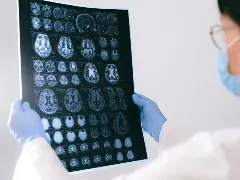

During National Drug-Free Pain Management Awareness Month in September, the Foundation for Chiropractic Progress (F4CP) warns that worsening pain and drug overdose fatality trends in the U.S., on pace to officially surpass a record-breaking 90,000 deaths in 2020, indicate a greater need than ever for Americans to seek safe, effective and drug-free chiropractic care.
Two recent pieces of significant evidence highlight these concerning public health trends. The first, a 17-year study published in April 2021, discovered “extensive escalation of pain prevalence” across adult men and women in the U.S. ages 25 through 84. The study found the steepest increases in joint pain, which increased by 21% over the 17-year period, and for low back and neck pain (15% and 16% increases). Researchers note that their findings “support the need for broad interdisciplinary research on, and interventions for effective responses to, the growing problem of pain in the United States.”
The second trend is the increase in drug overdose deaths. In December 2020, the Centers for Disease Control and Prevention (CDC) issued a press release linking the significant mental health and economic disruption caused by COVID-19 to a record 81,000 deaths between May 2019 and May 2020. Provisional data from the CDC, which is not yet finalized, shows this upward trajectory has continued unabated, reaching 90,000 deaths for the 12 months ending in November 2020.
In the announcement, the CDC attributed the direct cause of the overdose death increase to synthetic opioids, primarily fentanyl, rather than prescription opioids. An August 2020 study in Drug and Alcohol Dependence, however, shows that an inability to obtain prescription opioids is associated with the initiation of heroin use. Such findings are echoed in a National Institute on Drug Abuse report released in June 2021 which also found prescription opioids often precede heroin use and that many individuals with an opioid-use disorder report that they transitioned from prescription drugs to heroin due to lower cost and ease of access.
These concerning trends are further indicators that a pharmacological approach to non-cancer, musculoskeletal pain is not just ineffective, but also dangerous. While the nation is hopefully emerging from the COVID-19 pandemic for good, our progress combating the opioid epidemic is faltering while pain continues to debilitate more Americans than two decades ago. Fortunately, evidence continues to emerge that safe and drug-free chiropractic care can help more people find the relief they need without the risks associated with opioids and other addictive pharmaceutical drugs prescribed for pain, such as benzodiazepines.
Inverse association between chiropractic and opioid use
One such recent study of chiropractic care’s safety and efficacy found that harmful medication-related incidents occurred 42 times more often in older adults who were first prescribed opioids as opposed to patients who first received spinal manipulative therapy (SMT). DCs deliver nearly 97% of SMT in the U.S., according to a recent analysis of claims data covering a 12-month experience in a national commercially insured population. Adverse drug events can include medication errors, overdoses or other drug reactions that cause harm to the patient.
Similarly, a December 2020 study in Pain Medicine found patients with spinal pain who saw a chiropractor had half the risk of filling an opioid prescription. Among those who saw a chiropractor within 30 days of diagnosis, risk reduction was greater as compared with those with their first visit after the acute phase. A review of literature published the year earlier, also in Pain Medicine, arrived at a similar conclusion with authors noting an “inverse association” between chiropractic use and patients receiving an opioid prescription from another provider given that doctors of chiropractic (DCs) do not prescribe pharmaceutical drugs.
During Drug-Free Pain Management Awareness Month, we recognize pain and opioid-use disorders continue to be closely linked and growing public health problems that require an interdisciplinary care model that more often includes drug-free care, such as chiropractic, as a first-line approach. Chiropractic care alone cannot solve these urgent and complex challenges, but it can certainly play a significant role. DCs across the nation are eager to do their part to help reverse these trends.
About the author:
Sherry McAllister, DC, is president of the Foundation for Chiropractic Progress (F4CP). A not-for-profit organization with over 29,000 members, the F4CP informs and educates the general public about the value of chiropractic care delivered by doctors of chiropractic (DC) and its role in drug-free pain management. Learn more or find a DC at www.f4cp.org/findadoc.








Comments
Post a Comment